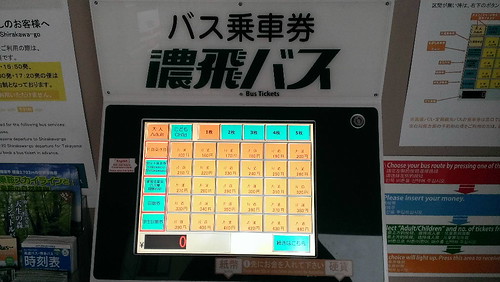
Today, we are going to Okuhida region for two attractions: Kamikochi and Norikura.
Therefore, we will stay at Hirayu onsen for one night.
Nohi bus operates many lines from Takayama to other cities and attractions, including Hirayu, Kamikochi, Norikura, Shirakwa-go, Nakazawa and etc.
The Nohi bus station in Takayama is close to JR station.
You will find lots of coin lockers in front of the station.
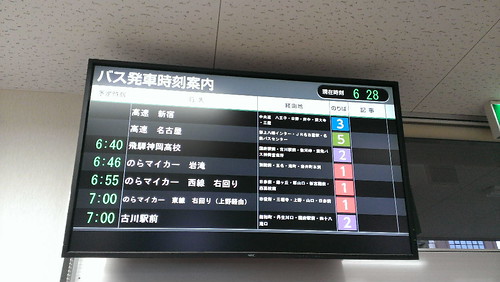
The information board inside the waiting room display the bus schedule and the number of the bus stop.
Excpet for many vending machines for drinks and hot foods, they also provide free wifi for guests.
The short-distance ticket could be bought from the ticket machine.
You have to choose "Adult or Child", the number of the ticket and the price for your destination.
If you are confused, you could also buy tickets from the counter inside the station.
Some Japanese words below are useful keywords related to the ticket buying:
 "大人" means adult, "子供" or "こども" means child.
"大人" means adult, "子供" or "こども" means child.
 "枚" is the unit for papers, tickets, cash and etc.
"枚" is the unit for papers, tickets, cash and etc.
 "人" is the unit for people.
"人" is the unit for people.
 "ひとり" or "1人" means one person and "ふたり" or "2人" means two people.
"ひとり" or "1人" means one person and "ふたり" or "2人" means two people.
 The japanese word of your destination is recommended to know in advance, such as 平湯溫泉 (Hirayu Onsen).
The japanese word of your destination is recommended to know in advance, such as 平湯溫泉 (Hirayu Onsen).
For example, if you want to buy tickets from the counter but you worry that the staff could not understand English very well. You could write down the time, the destination, adult or child, and the number on the note, such as "8:50, 白川, 大人, 2枚". Sometimes, they will understand what you want.
As for the price, they will show you on the calculator.
Someone might also wonder whether they have to buy tickets in advance or not.
If you want to go to Hirayu, the seats are all non-reserved.
You just buy the tickets earilier on the departure day and line up eariler before other tourists do.
Of course, the earlier bus is usually a nice choice to avoid the crowded.
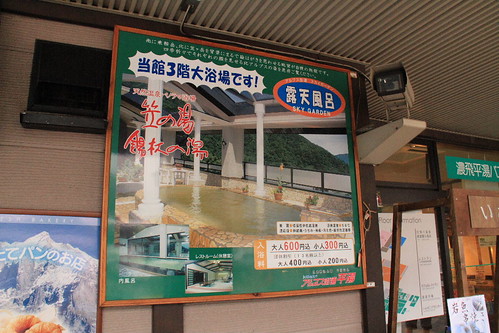
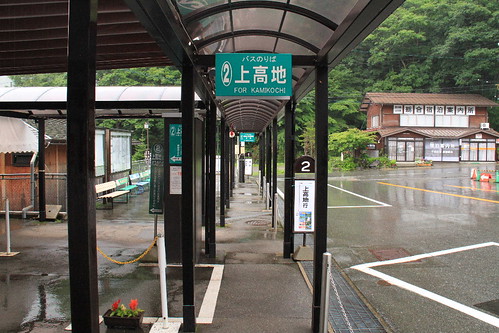
The bus to Hirayu Onsen takes about one hour, and then you have to buy another ticket to kamikochi or Norikura that is not available in Takayama.
No. 2 bus stop is for going to kamikochi and the seats are also non-reserved.
Though the tourists going to kamikochi are a lot, the bus departs every 30 minutes.
Hirayu bus station sells specialty on the 1st floor. Outside the station, you will find a free foot bath tub.
If you don't have a stay in Hirayu but want to enjoy the onsen, the 3rd floor of the station is the public onsen only for 600 Yen (child is 300 Yen).
By the way, Kamikochi and Norikura are in the national park, and therefore the private cars are prohibited to enter the park. You must take the bus or taxi from Hirayu.

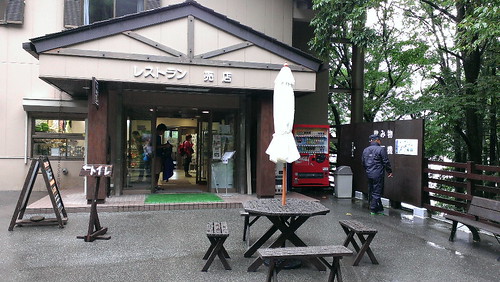
Kamikochi means "Upper Highland" and reaches the altitude of 1500 m.
The name is derived from the kanji "神垣内" which means "Inside the God's Place", because it was said that "穂高見命" (Hotakaminomikoto) appeared on Mount Hotaka.
Nowadays, 上高地 (also pronounced as Kami-kō-chi) has become the common way to write the name.
This place is famous for its well-preserved nature and also good for mountain climbing.
If you study the map of Kamikochi in advance and also read other backpacker's blogs, you will know that it's better to get off at Taishoike (Taisho Pond).
Actually, most of the tourists will get off here. So, just follow them.
It's raining when we arrived, but it's still fine for visiting.
The first part of our route is going from Taisho Pond to Kappa Bridge along the Azusa River.

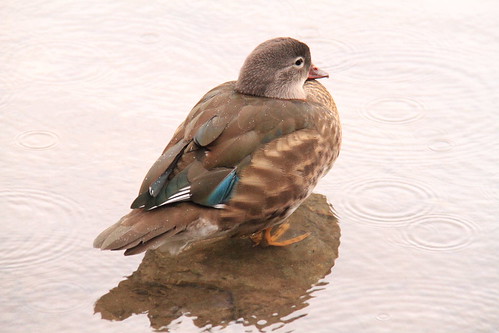
Taisho pond was formed by the volcanic activity of Mount Yake in 1915.
It's one of the most sceninc place for viewing the reflection of Mount Yake on the surface.
Because of the rain, we don't see that beautiful scene introduced.
However, the cloud surrounding around the mountains shows another atmosphere just as the wonderland.
The contrast of the cloud and the dark mountains makes my pictures like the black-and-white chinese painting.
There are some ducks around the pond. I like to observe them with my camera.
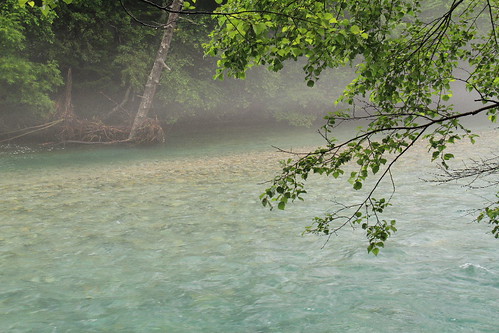
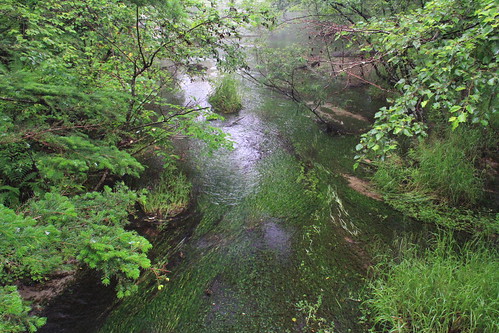
Walking along the Azusa river, I'm sure you would be amazed with the beautiful green of Azusa river.
Among all the scenes of all the countries I've visited, Azusa river should be the most beautiful river of all.
These fantastic natural beauties are the reason I keep travelling every year.
By the way, the temperature of water is quite cold even in the summer.
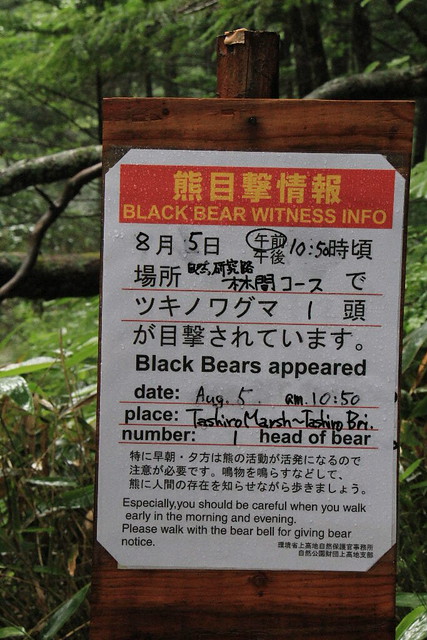
Since we are in the national park, there should be some creatures inside the park.
After the bear warning in Magome, I find the same wrning again in Kamikochi.
It's said the someone saw a black bear just in the morning yesterday.
Hmmm.....I hope that this black bear knows to keep away from human.
Maybe I should prepare a bear bell if possible.
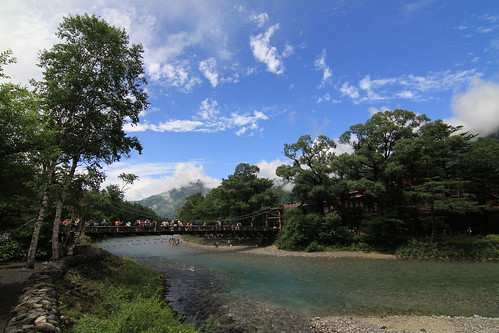
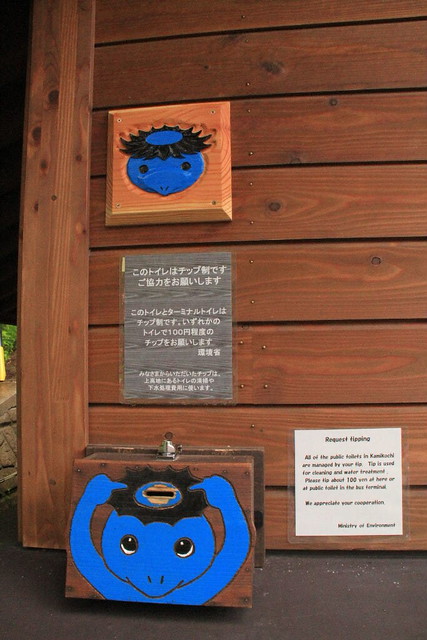
Basically, it's easy to walk to Kappa Bridge while passing the bus terminal.
Kappa is the ghost (yokai) in Japanese folklore who looks like the mixture of human child and turtle.
In Japan Shinto, Kappa is also considered as water diety.
No wonder, it's interesting to make Kappa as a feature of this atrraction by the river.
You may find the Kappa pictures in front of the toilet which is maintained by the donation of 100 Yen from the tourists.
The tourists here are numerous.
With the blue sky, green trees and Azusa river, the scenery around Kappa bridge is pretty nice.
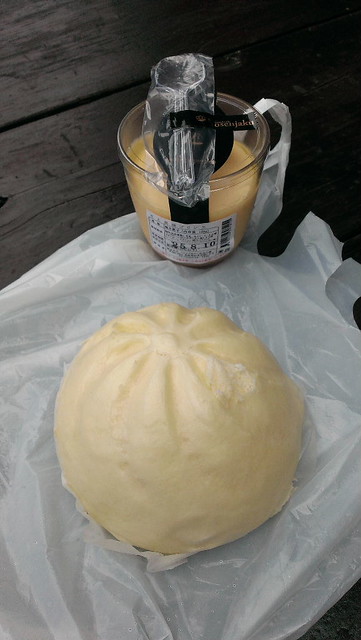
You may take a rest here for a moment. The specialty shop sells many refreshment, dessert and souvenir such as the Kappa doll.
Though there is also a Kappa restaurant at the 2nd floor of the building, I want to go to Myojin Pong first.
Therefore, I buy a pudding and two steamed beef buns (牛まん) as my refrement.
The pudding is different from the pudding in Taiwan. I think the milk makes it much like the cream.
As for the steamed bun, the filling is also different. In Taiwan, the filling of beef mince is not common.
Anyway, these refreshments are both tasty and the price is not high.

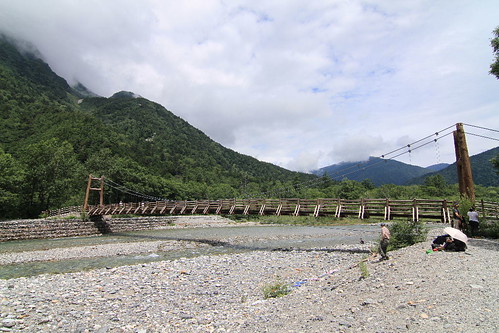
From Kappa bridge, the route to Myojin Pond is much longer and tiring if you'are not used to hiking.
Compared with Torres del Paine of Chile, I think this kind of route is still the easiest one for the duration is less than 4 hours.
In the Japanese official website, the spot introduction will give you the information.
The estimated time for walking to Myojin Pond is about one hour that is precise for the people with average body condition.
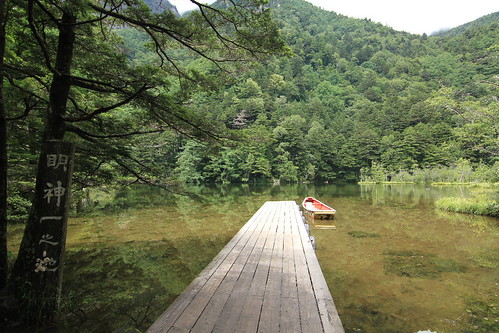
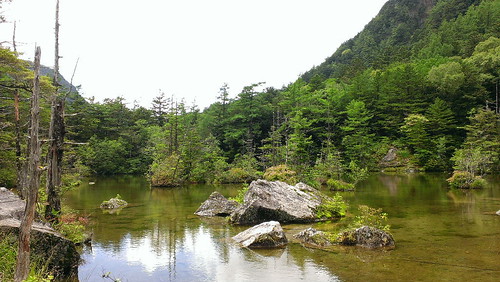

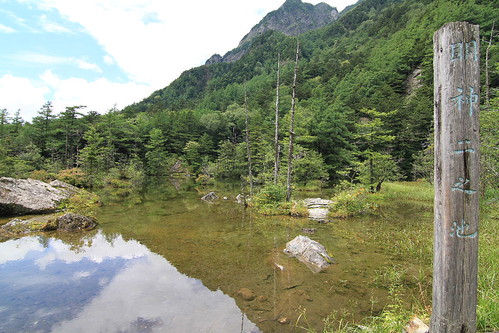
After passing the Myojin Bridge over Azusa river, Myojin Pond is near.
Myojin Pond consists of two ponds filled with clear water.
It was once a section of Azusa river but blocked by the rocks from Mount Myojin.
The additional admission is required at the entrance.
You may also see the Hotaka Shrine Inner Alter (穂高神社奥宮) around the entrance.
On every Oct 8th, Hotaka Shrine festival "御船神事" is held to pray for the mountain’s safety.
Maybe the water is too clear or the depth of water is not enough for the reflection, I could not get an ideal picture around here.
Panorama photo would be good if your camera or smart phone supports this function.
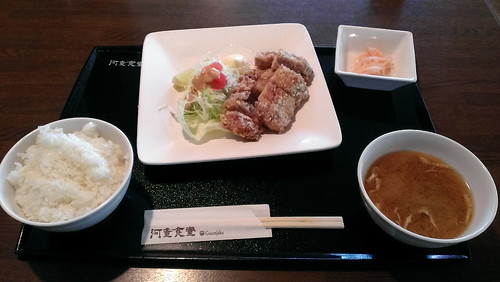
Coming back to Kappa bridge after I finish the photographing around Myojin Pond, it's the real time for lunch.
We don't have other destination today, so it's cosy to enjoy the meal.
The most recommended meal of the Kappa Restaurant is "山賊定食".
山賊焼きや (Sanzokuyaki) is the Japanese words for fried chicken.
I really think that the food in Japan is very delicious no matter where you are and Japanese is quite good at the fried food.
This fried checken meal is really great and juicy. I'm very satisfied.
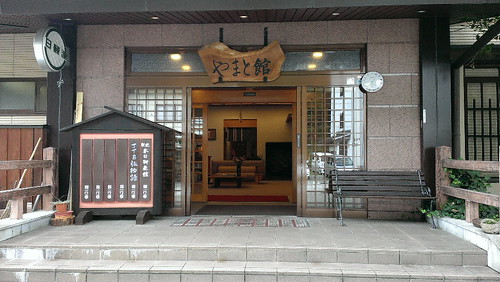
Around three o'clock, we come back to Hirayu Onsen.
Though it's still early, I prefer to rest because of Norikura we will go tomorrow.
There are many hot spring regions in Okuhida, and Hirayu onsen is one of these.
Most of the buildings here are onsen hotels.
I booked the やまと館 (Yamatokan) that they accpet the foreign tourists.
In fact, the Japanese are not all good at speaking English, especially in the countryside.
Therefore, if the hotel doesn't have staffs who could speak English, they are used to reject the foreign tourists because they think they could not serve well.
It's really a problem while searching for a accommodation in the place like this.
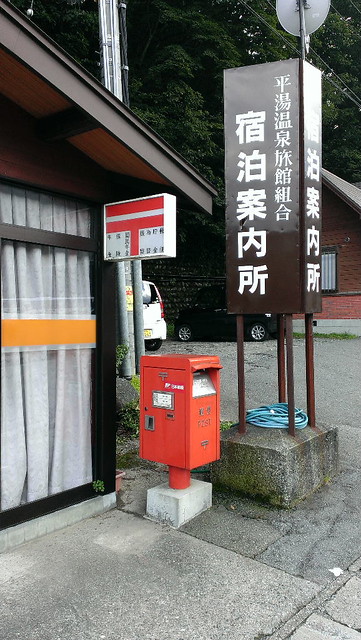
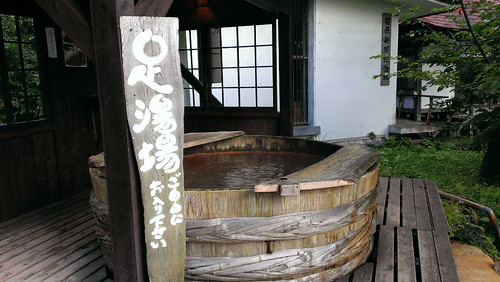
Except for relaxing your body in the hot spring, you could watch TV and drink the hot tea.
I write the only one postcard in the room and mail it in the post office nearby the bus station.
If you are confused with Japanese TV programs, you could visit the Hirayu Shrine with a foot bath tub nearby.
A open-air onsen "平湯之湯" (Horayu-no-yu) is in the Hirayu folk musem behind the shrine.
Behind the hotel we stay, there is also a small park with a long foot bath tub.
By the way, there are activities held by Hirayu Shrine on every Oct 1st, May 15th, and Aug 10th to 20th.

Our dinner are served in the room. Though I've stay in the onsen hotel while travlling in Hokkaido five years ago, the rich dinner still surprises me.
Kaiseki is a traditional multi-course Japanese dinner.
Only the fresh seasonal ingredients are used and prepared in many ways.
It's not only an art of dishes, but also the balanced meal.
For someone, the portion may be too big. However, it's good to enjoy the time with family.
While you finish the dinner, you just call the staff via the phone in the room. The staff will clean the table and prepare your beds.
If you feel it's too hot to sink in the hot spring in the afternoon, it should be a good time after the dinner.
The temperature becomes cool in the night and it's nice and comfortable to enjoy the hot spring again.
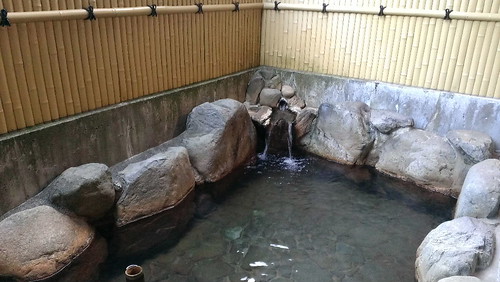
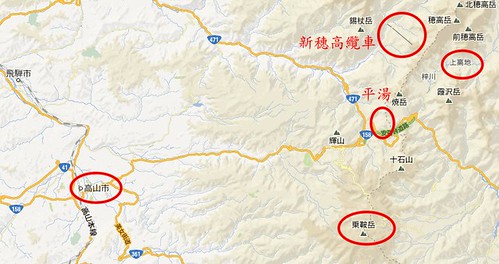
References:
http://www.japan-guide.com/e/e5942.html
http://wikitravel.org/en/Oku-Hida_Onsen_Villages
http://www.nouhibus.co.jp/english/
http://www.kamikochi.or.jp/english/
http://en.wikipedia.org/wiki/Mount_Hotaka_(Nagano,_Gifu)
http://en.wikipedia.org/wiki/Kappa_(folklore)
http://en.wikipedia.org/wiki/Y%C5%8Dkai
http://en.wikipedia.org/wiki/Cryptid
http://www.hotakajinja.com/htm/okumiya.html
http://en.wikipedia.org/wiki/Kaiseki


 留言列表
留言列表
